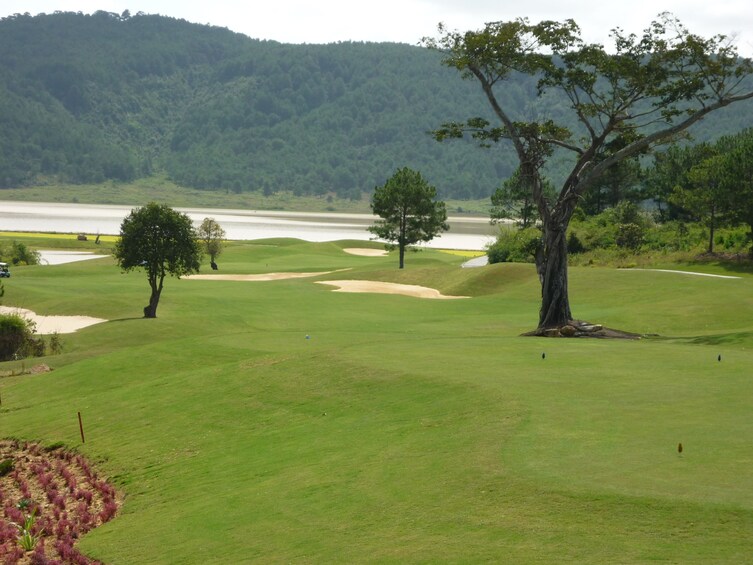The Dalat Palace Golf Club is situated 5000 feet above sea level in the temperate highlands of Dalat and plays downhill to the Xuan Huong Lake. Golfers at Dalat Palace are reminded of the days when the pursuit of leisure was the norm for the French colonialists. Local Vietnamese staff greet guests with warm, friendly smiles and service that has made Dalat a popular retreat for decades.
Built as a 9-hole layout in 1922, it took support from the country's most prominent golfer (Bao Dai, the last emperor of Vietnam) to finish the construction of a full 18-holes later in the decade. The Dalat Palace golf course was abandoned after WWII and revived in 1959. In early 1966, Dalat palace hosted professional golfers from around the world including Billy Casper several months before he beat Arnold Palmer to win the US Open at San Francisco's Olympic Club. The course was abandoned again in 1975, after the reunification of Vietnam, and initiated its second comeback in 1993 with a major renovation by a group of American investors. In early 1994, Dalat emerged once again as one of the up-and-coming golf destinations in Southeast Asia with the revival and expansion of Dalat Palace Golf Club.
Dalat Palace crosses through stately pine trees to oversized and delicately manicured bent grass greens, the only ones in Asia. Today, it's the top-rated course in Vietnam due to the excellent layout, many elevation changes, and for the bent grass greens. In fact, due to the cooler climate in the mountains of Dalat, Vietnam, the Dalat Palace Golf Club is the only golf course in South East Asia with bent grass tees, fairways and greens. Bent grass is often considered to be the ultimate playing surface in golf. The large, undulating bent grass greens are maintained to impeccable standards and present a good challenge. Once golfers adjust to the fast speed, they agree that the greens at Dalat Palace are among the finest in Asia.
The Brett Stensen redesigned course measures 7,009 yards and is an enjoyable challenge for golfers of all levels. Low handicap players will be tested by a series of lakes, which meander through ten of eighteen holes, as well as strategically placed bunkers, which penalize the miscalculating risk-taker. High handicappers will find relief with large accommodating greens normally left open for run-up approach shots, as well as wide, forgiving fairways.




